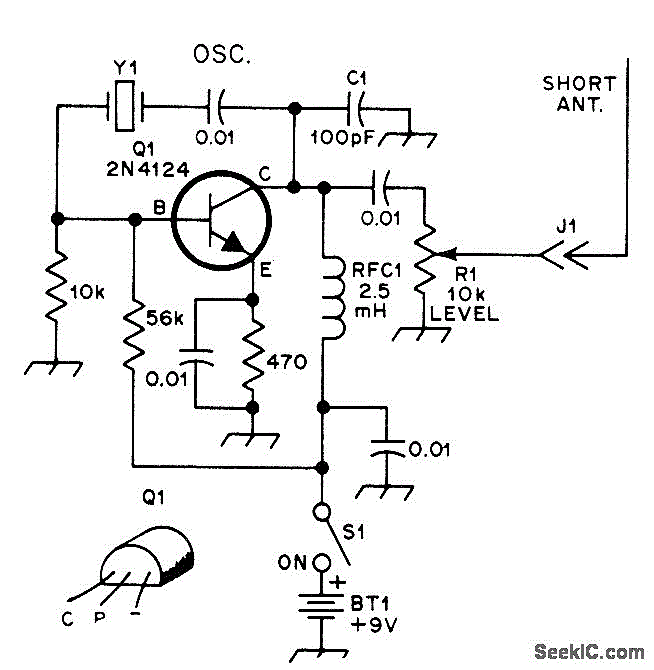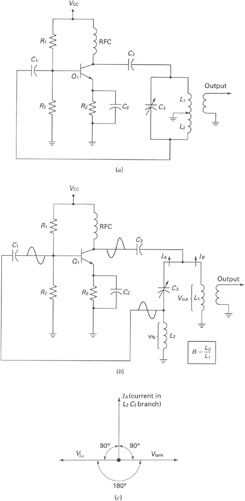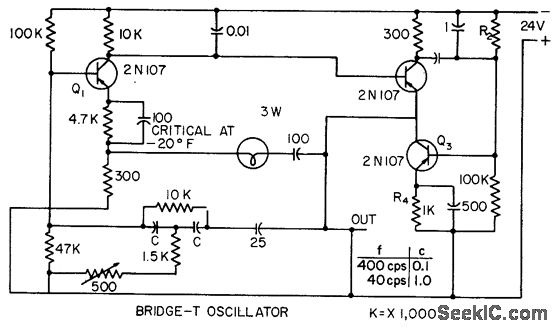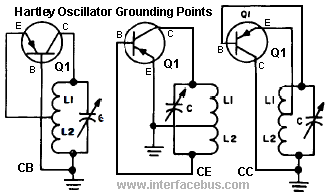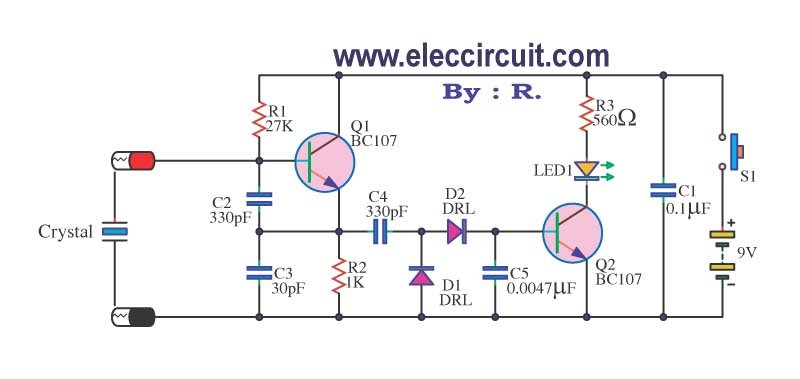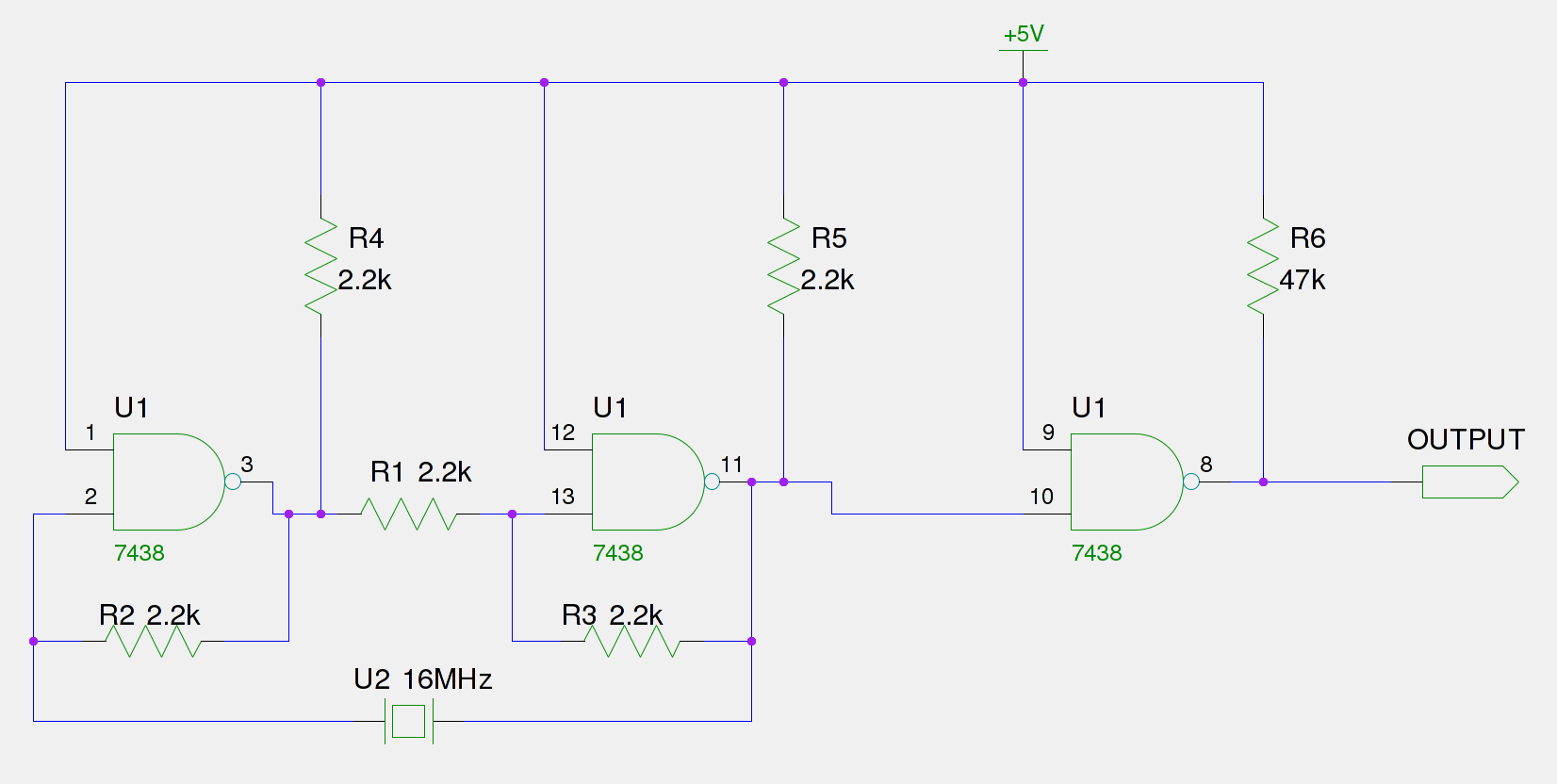
96Mhz crystal oscillator
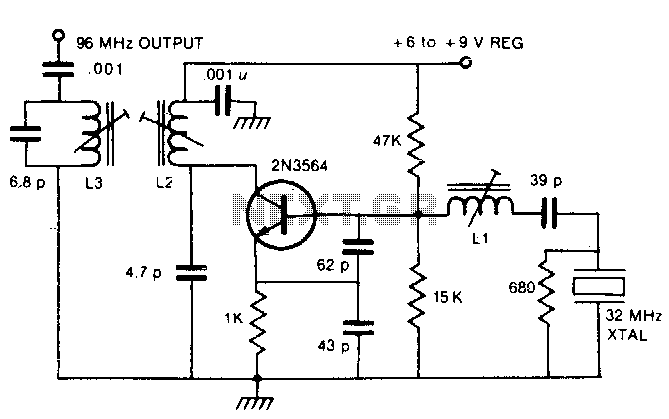
By utilizing a crystal oscillator operating between 27 and 33 MHz, the third harmonic frequency will produce an output ranging from 82 to 99 MHz.
The implementation of a crystal oscillator within the specified frequency range of 27 to 33 MHz allows for the generation of higher harmonic frequencies. The third harmonic is particularly significant as it is calculated by multiplying the fundamental frequency by three. Therefore, when a crystal oscillator is set within this range, it can effectively produce a third harmonic output between 82 MHz (27 MHz x 3) and 99 MHz (33 MHz x 3).
In practical applications, this configuration can be utilized in various electronic devices that require stable frequency generation, such as RF transmitters, signal generators, and communication equipment. The stability and precision of crystal oscillators make them ideal for maintaining consistent frequency outputs, which is crucial for the performance of high-frequency circuits.
To design a circuit that leverages this third harmonic generation, it is essential to incorporate additional components such as filters, amplifiers, and possibly mixers, depending on the intended application. For instance, a band-pass filter can be employed to isolate the desired harmonic frequency, while an amplifier may be necessary to boost the signal strength to usable levels.
Furthermore, attention must be given to the load conditions and the quality factor (Q) of the crystal, as these factors influence the output waveform's purity and stability. Proper grounding and shielding techniques should also be implemented to minimize noise and interference, ensuring that the generated signal remains clear and reliable for subsequent processing or transmission.By using a crystal between 27 and 33 MHz, the 3rd harmonic will deliver between 82 and 99 MHz. 🔗 External reference
The implementation of a crystal oscillator within the specified frequency range of 27 to 33 MHz allows for the generation of higher harmonic frequencies. The third harmonic is particularly significant as it is calculated by multiplying the fundamental frequency by three. Therefore, when a crystal oscillator is set within this range, it can effectively produce a third harmonic output between 82 MHz (27 MHz x 3) and 99 MHz (33 MHz x 3).
In practical applications, this configuration can be utilized in various electronic devices that require stable frequency generation, such as RF transmitters, signal generators, and communication equipment. The stability and precision of crystal oscillators make them ideal for maintaining consistent frequency outputs, which is crucial for the performance of high-frequency circuits.
To design a circuit that leverages this third harmonic generation, it is essential to incorporate additional components such as filters, amplifiers, and possibly mixers, depending on the intended application. For instance, a band-pass filter can be employed to isolate the desired harmonic frequency, while an amplifier may be necessary to boost the signal strength to usable levels.
Furthermore, attention must be given to the load conditions and the quality factor (Q) of the crystal, as these factors influence the output waveform's purity and stability. Proper grounding and shielding techniques should also be implemented to minimize noise and interference, ensuring that the generated signal remains clear and reliable for subsequent processing or transmission.By using a crystal between 27 and 33 MHz, the 3rd harmonic will deliver between 82 and 99 MHz. 🔗 External reference
